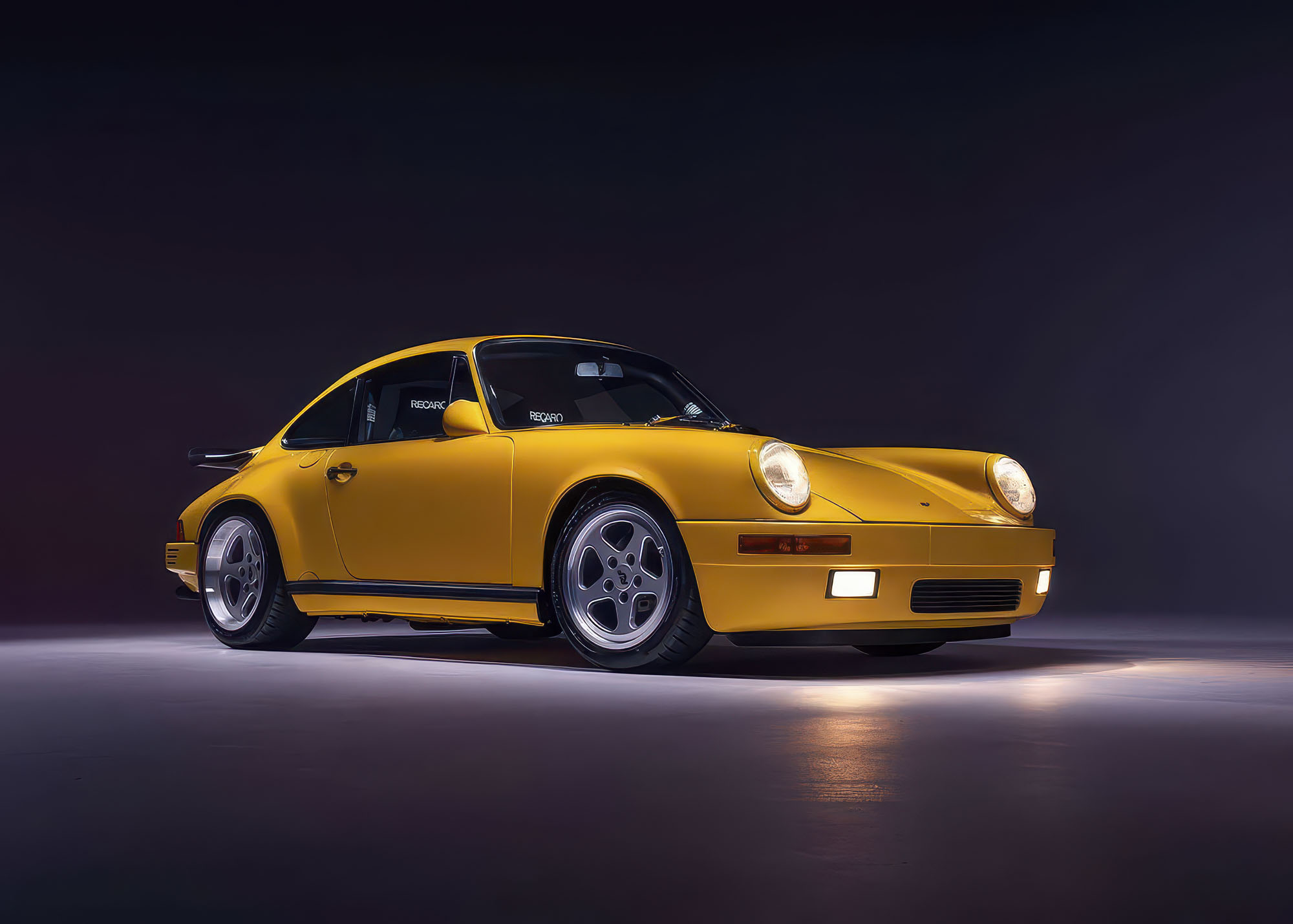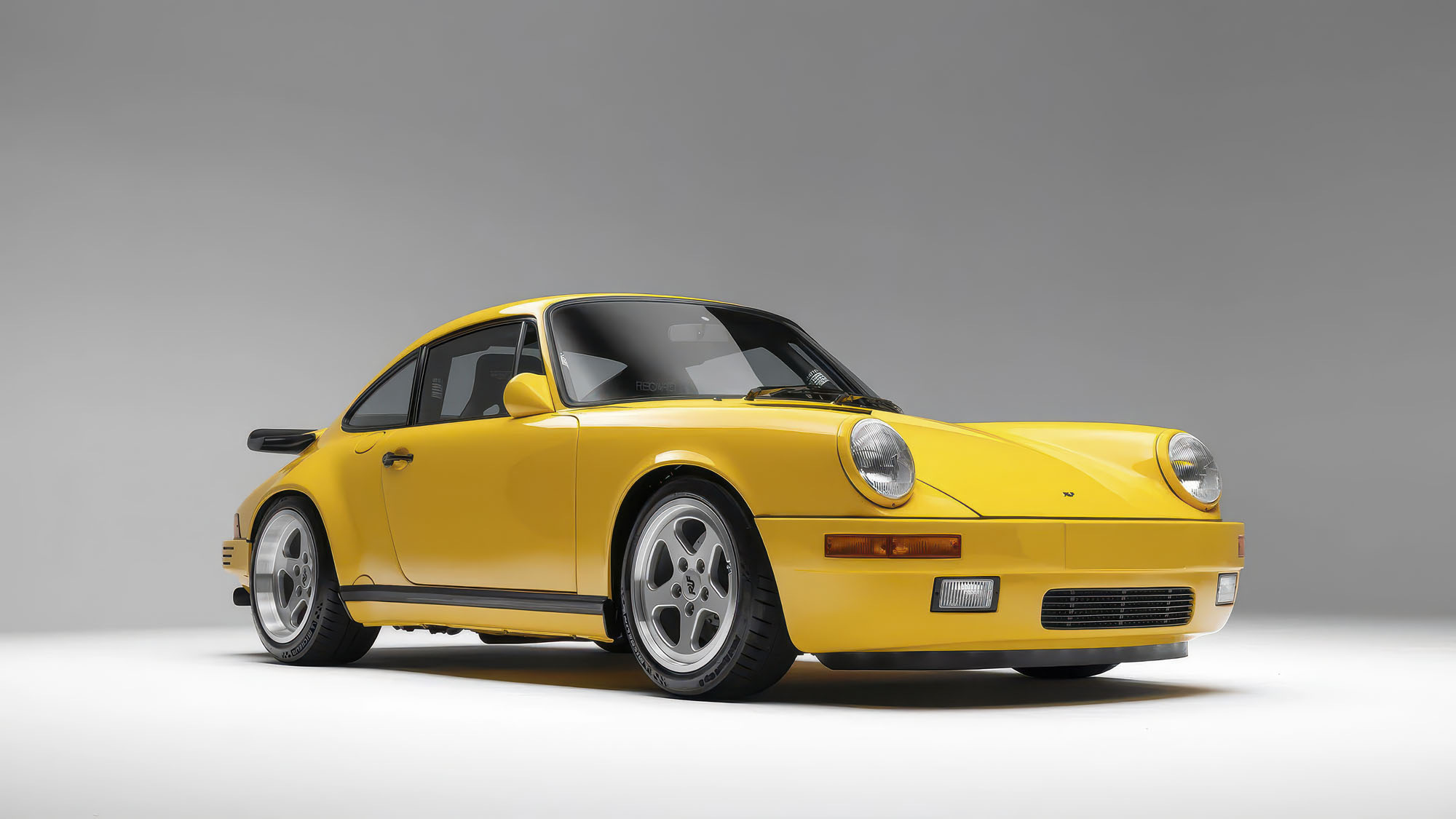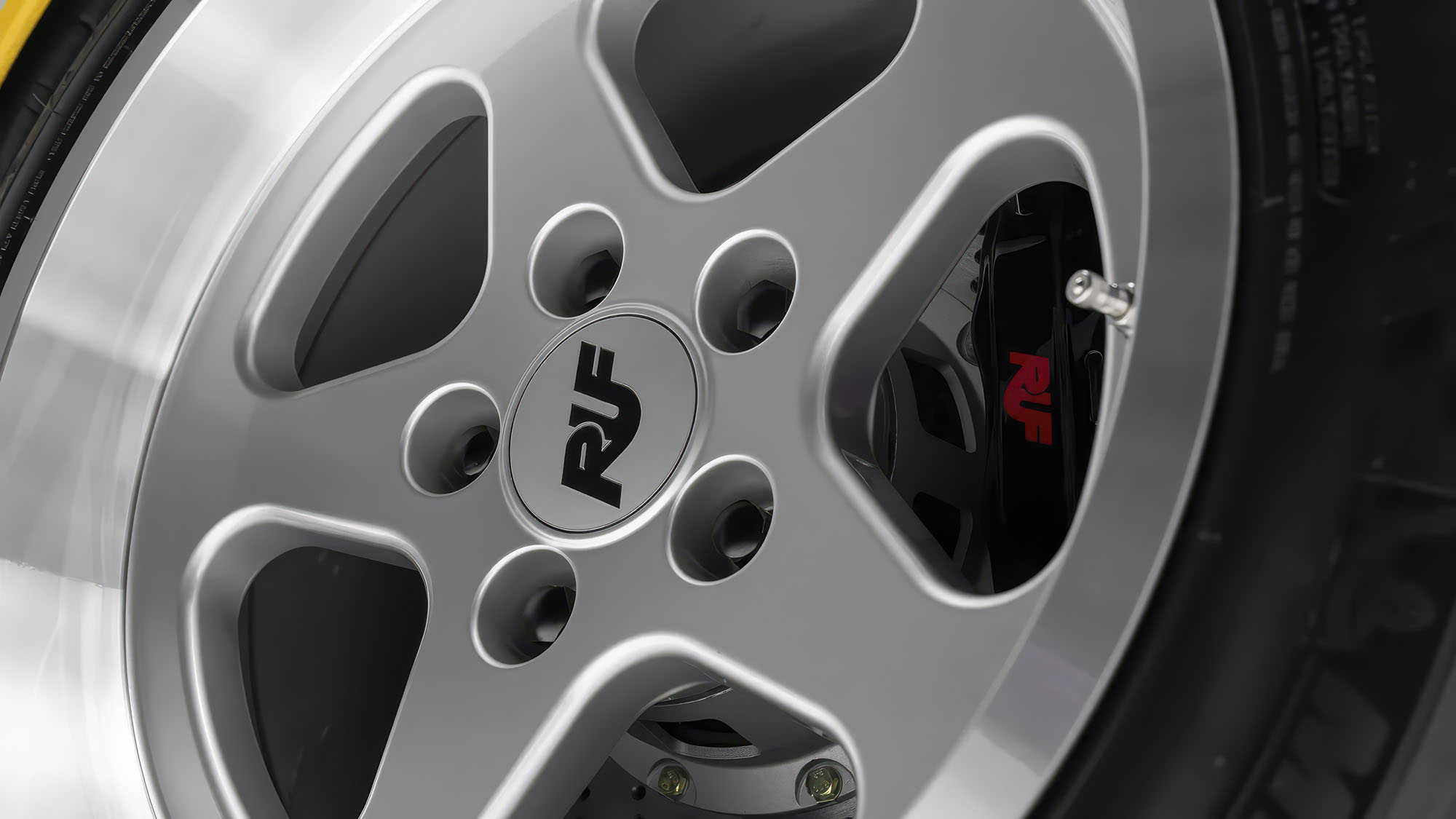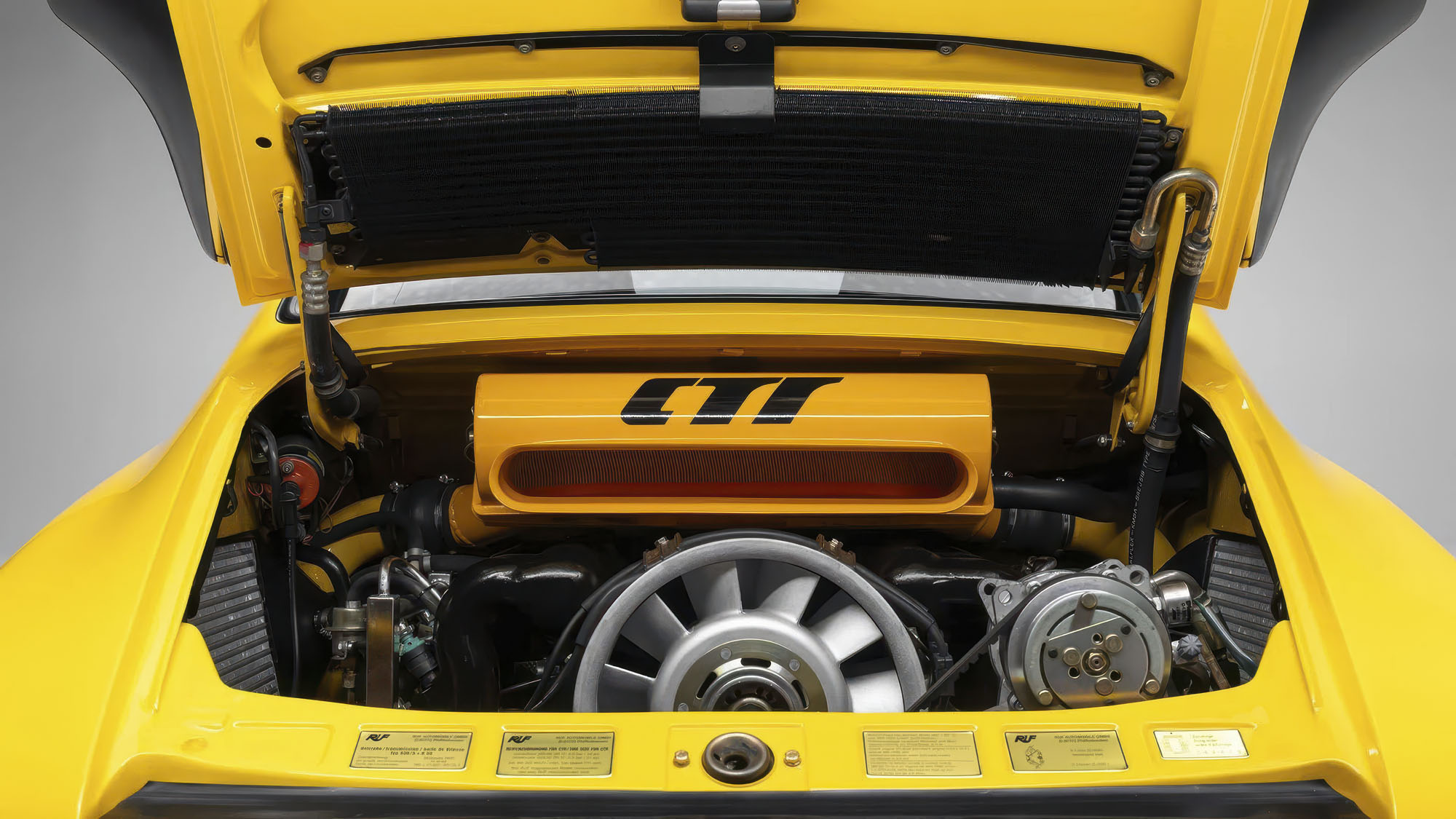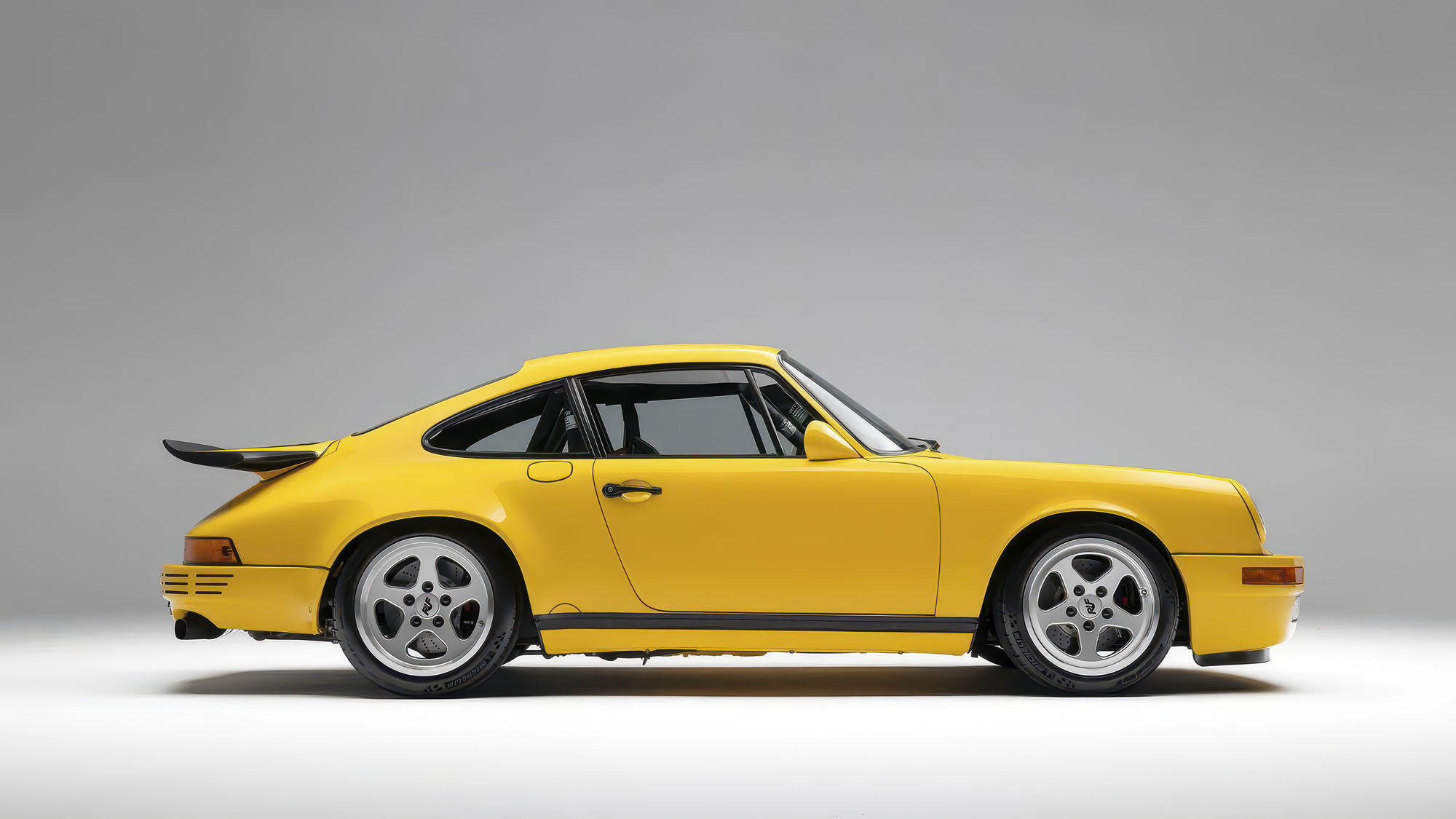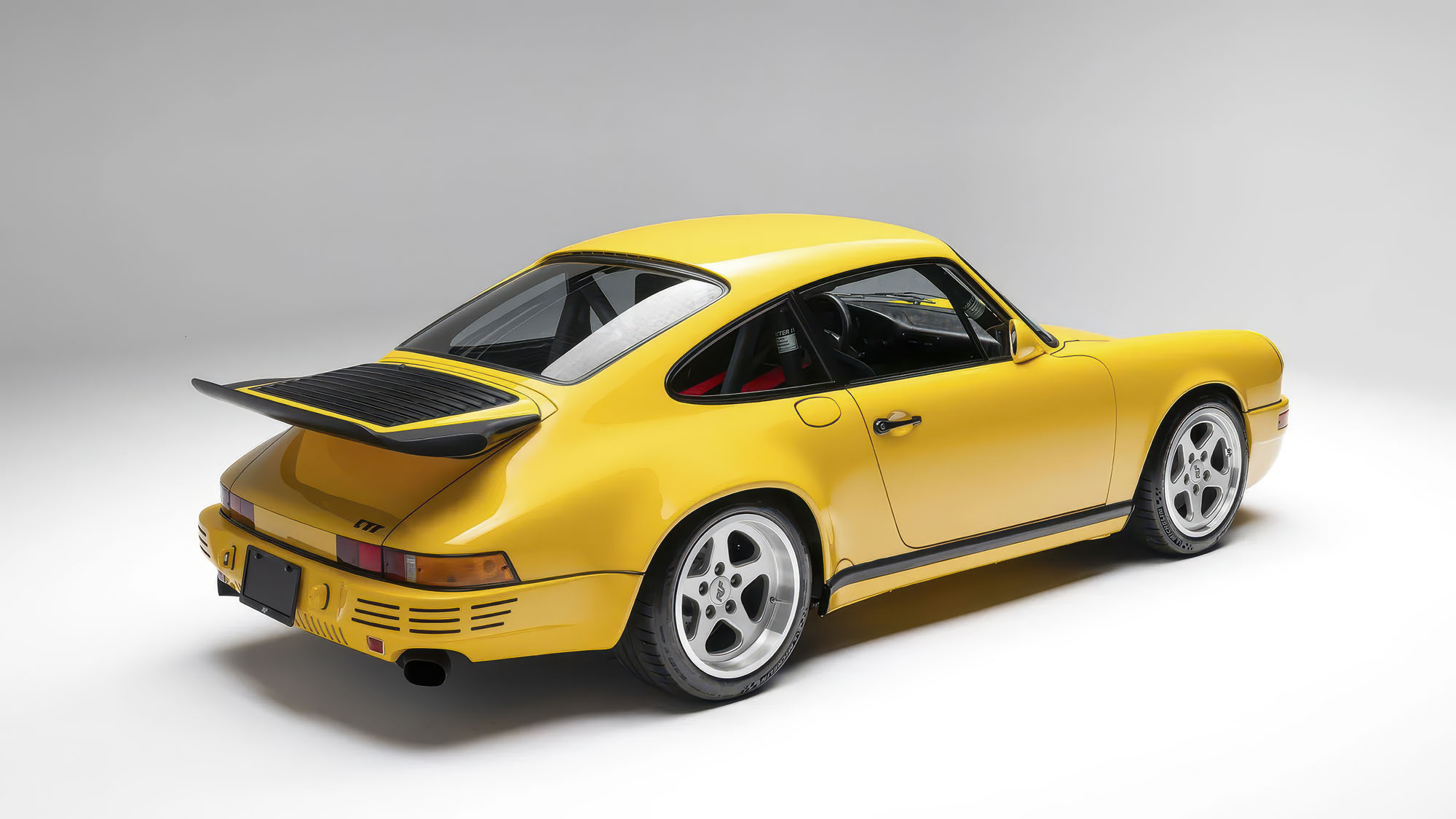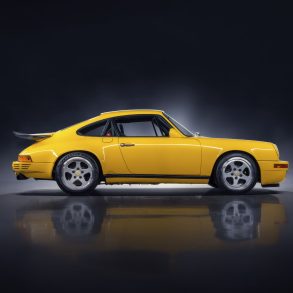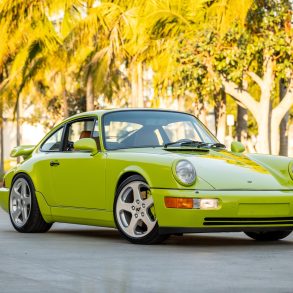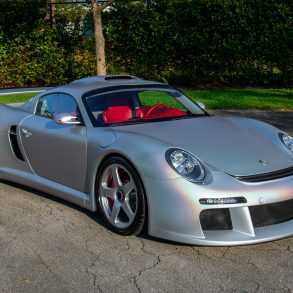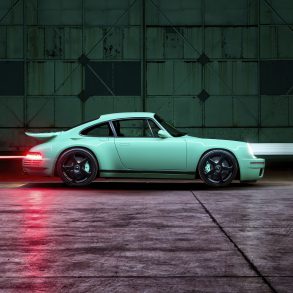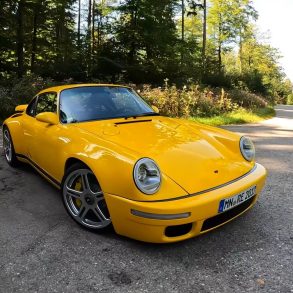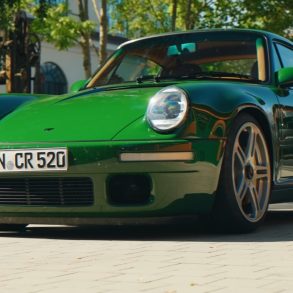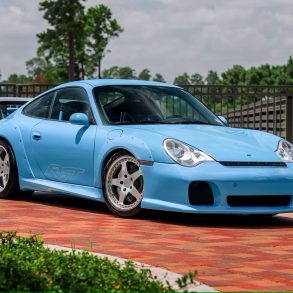Background
In understanding the legendary Yellowbird, it is critically important to understand RUF as a company, how it was founded, and what it means to the automotive world. With its origins in 1939, RUF was founded by Alois Ruf, Sr. as a service garage, but it wasn’t until 1987 that the firm made its mark and truly became what it is today, with Alois, Jr. at the helm—an engineer whose mandate to his team was always to develop more horsepower per liter than any other manufacturer and to engineer the very best driving experience, irrespective of the car’s visual appearance or design. Unlike its competitors, RUF is not a modifier; it is an outright manufacturer whose cars carry the critically important “W09” designation in their VINs—specific to the marque and to the cars.
Limited Production
The total production numbers are unsurprisingly very small given their dedication to ground-up manufacturing. In the past 37 years since the CTR Yellowbird was introduced, Ruf had only built about 400 total “W09”-VIN cars, up until the introduction of the CTR Anniversary in 2017, for which only 50 cars were produced worldwide.
Highlights
- One of only 29 W09 Group C Turbo Ruf (CTR) Yellowbirds
- The only Yellowbird specified with a special lightweight interior
- Fully matching-numbers example with a RUF six-speed manual transmission
- Factory authenticated by its RUF Zertifikat in 2016
- 3.4-liter twin-turbo flat six producing 469 horsepower with a 213 mph top speed; the fastest production car at the time
- An exceptional example of RUF’s record breaking supercar made world famous at the Nürburgring by test driver Stefan Roser
Road & Track’s “World’s Fasted Car”
The original CTR’s introduction truly took the world by storm. In 1987, Road & Track magazine hosted its top speed challenge at Nardo, including every notable sports car manufacturer, which had carefully prepared its cars. Among the field was the Ferrari F40, the most coveted car of its era, which arrived with a claimed (and unheard-of) top speed of 201 mph. The Ruf CTR, on the other hand, was driven to Nardo from Pfaffenhausen directly, not trailered like every other manufacturer. Blowing the doors off every other competitor at the high-speed ring that day, it reached a top speed of 211 mph, and indeed it was Road & Track that gave the car the moniker “Yellowbird” as a result.
Certainly, the title of “World’s Fastest Car” was a groundbreaking achievement for Alois Ruf and his company. Although this wasn’t his first model, it was certainly the car that put his company on the map and let the world know he was a competitor and a force to be reckoned with. Many would argue today that he is the greatest contemporary automotive engineer of his generation, and while his reputation preceded him in Asia and Europe for many years, he has rightfully gained this recognition Stateside over the last decade.
All told, only 29 Yellowbirds were built for worldwide distribution. In Porsche terms, such rarity compares to the 959 Sport, of which only 29 cars were also built, and which is incidentally considered the most highly valued Porsche road car of its kind. The McLaren F1, on the other hand, was built in comparatively much more plentiful numbers—64 street cars were built in total! The Mercedes-Benz CLK GTR Coupe and Roadster are perhaps good comparison points as well, as only 26 examples were built, as is the Porsche 911 GT1 Strasse, of which 20 examples were produced.
13 Known To Exist
Of the original 29 RUF CTRs built, 13 are known to exist in the United States. Of the remaining cars, they uniformly remain in the hands of some of the most important collectors in the world, many of whom have the means to turn down even the most generous offer or for whom the removal of the Yellowbird would signify the disappearance of the cornerstone of their collection, and therefore an untenable proposition. As Alois undoubtedly nears eventual retirement, it is reasonable to think that much like with Ferrari’s “post-Enzo Era,” RUF will likewise experience a similar phenomenon. Namely, an appreciation for the era in which Alois himself built these fantastic cars, including the Yellowbird, and a “post-Alois” era which will surely see continued success for the company but only add further appreciation for the Yellowbird.
Bespoke Interior
As one of the 29, this particular RUF CTR Yellowbird, chassis number 023, is remarkable for not only its exceptional performance and classic Blütengelb Yellow paintwork but its “one-of-one” interior as the singular CTR Yellowbird outfitted with a special light weight interior. Furthermore, it features the desirable RUF-designed six-speed transmission— an unbelievable combination of good taste and insight into future desirability from its original owner. Perhaps most impressive are the notations recorded on its RUF Zertifikat issued in 2016. Signed by Hans Kerler, noted on the document as the original builder of 023, the document states that aside from a minor paint repair in the engine bay completed by RUF, it retains “100 % first paint otherwise.” Furthermore, it describes the 469 horsepower 3.4-liter flat-six engine and six-speed manual as “original and have matching numbers; completely checked and blue-printed.” The inspection by RUF included an undercarriage cleaning, paint buff, complete maintenance, and the installation of new wheels and tires, ensuring a near-factory fresh example.
Auction Info
Go HERE
Related Content
Above content © 2025 Broad Arrow Auctions, reviewed and edited by Rex McAfee


